A series looking at three British Bakelite folding strut cameras of the Art Deco era
Introduction: Struts, Style & Synthetics: Three British Bakelite Cameras of the Art Deco Era
Part 1: Struts, Style & Synthetics Part 1: APeM Rajar No.6
Part 3: Struts, Style & Synthetics Part 3: Soho Model B
Kodak No.2 Hawkette (1930)
✅ Type: Folding Strut Camera
✅ Material: Brown mottled Bakelite body with metal fittings
✅ Film Format: 120 roll film (6×9cm negatives)
🔹 Key Features:
- Kodak’s first Bakelite-bodied folding camera.
- Innovative hinged film door along the long side of the camera back.
- Basic meniscus lens and simple shutter, designed for amateur photographers.
The Kodak No.2 Hawkette was likely a direct response to the introduction of the APeM Rajar No.6 a year earlier. The timing, material choice, folding strut design, 120 roll film format, and low-cost amateur target market also suggest it was conceived as a direct competitor. Throw in the fact that the No.2 Hawkette was also sold through premium sales and it’s almost a “dead cert”.
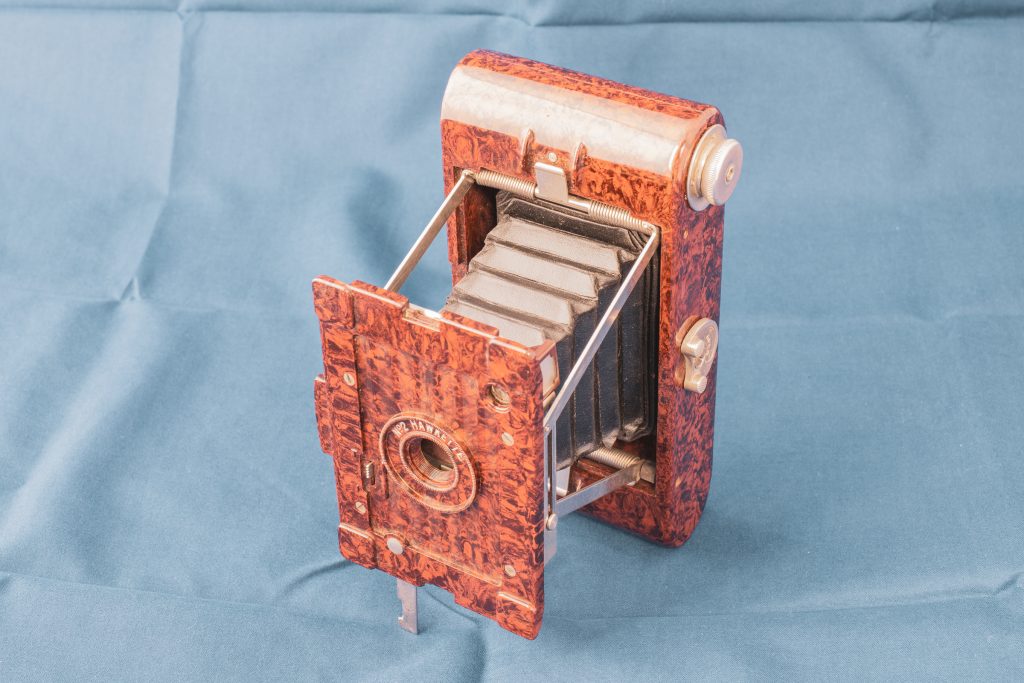
Another premium camera
An advertisement in John Bull of 21st June 1930 by Black Cat Virginia Cigarettes offered the Kodak No.2 Hawkette in exchange for 400 coupons, an equivalent monetary value of 2 pounds and 2 shillings. Coupons were included in packets of cigarettes. When the smoker had inhaled and coughed their way through enough tabs to acquire 400 coupons, they could send the coupons off to be exchanged for the camera. This particular advertisement claims only 100,000 copies of the camera were made and that “at our request these cameras incorporating many new features were specially designed for the benefit of Black Cat Smokers.”
Unlike the advertisement for the Rajar No.6 which didn’t mention the material the camera was made from, the John Bull promotion gives the first synthetic plastic top billing in the numbered list of special features; “Strongly made of ‘Bakelite’, will not Warp or Tarnish – Walnut Finish”.
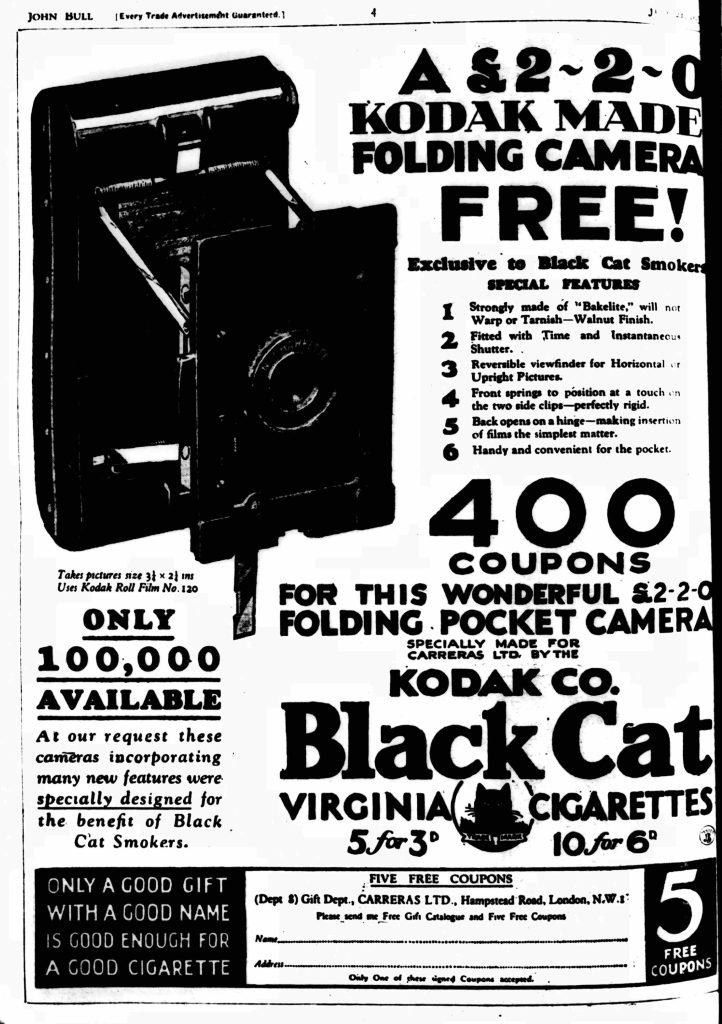
Which company moulded the No.2 Hawkette?
For years it was thought that EK Cole, the British manufacturer of elegant and pioneering Bakelite bodied radios had moulded the No.2 Hawkette for Kodak. However, there was never any primary source of evidence to indicate that. The matter was resolved by some dedicated lockdown digging by a researcher at the Museum of Design in Plastics; Pam Langdown came across and advertisement in the July 1931 issue of British Plastics and Moulded Products Trader linking the camera with Solidite and Synthetic Mouldings Ltd, who compression moulded an array or products at their Albion Works in Clapham.
Solidite and Synthetic Mouldings Ltd were an experienced outfit, having been involved in manufacturing wireless components for some years. They exhibited at the National Radio Exhibition at Olympia in 1927 where a stand report in Wireless World and Radio Review noted the versatility of Bakelite where “No shape seems to be too intricate for this medium, and the various methods of mottling and graining are most pleasing”.
Every camera is unique
Like the Rajar No.6, this folding strut camera is a mix of a traditional, tried and tested type of camera made with a new material. Unlike the Rajar No.6 which is plain black in colour, each ‘walnut’ pattern is unique to every copy of the No.2 Hawkette. This is because pigments or dyes would be added to the moulding powder in the mould just before being liquefied under heat and pressure in a hydraulic press to produce the wood like pattern in the plastic.
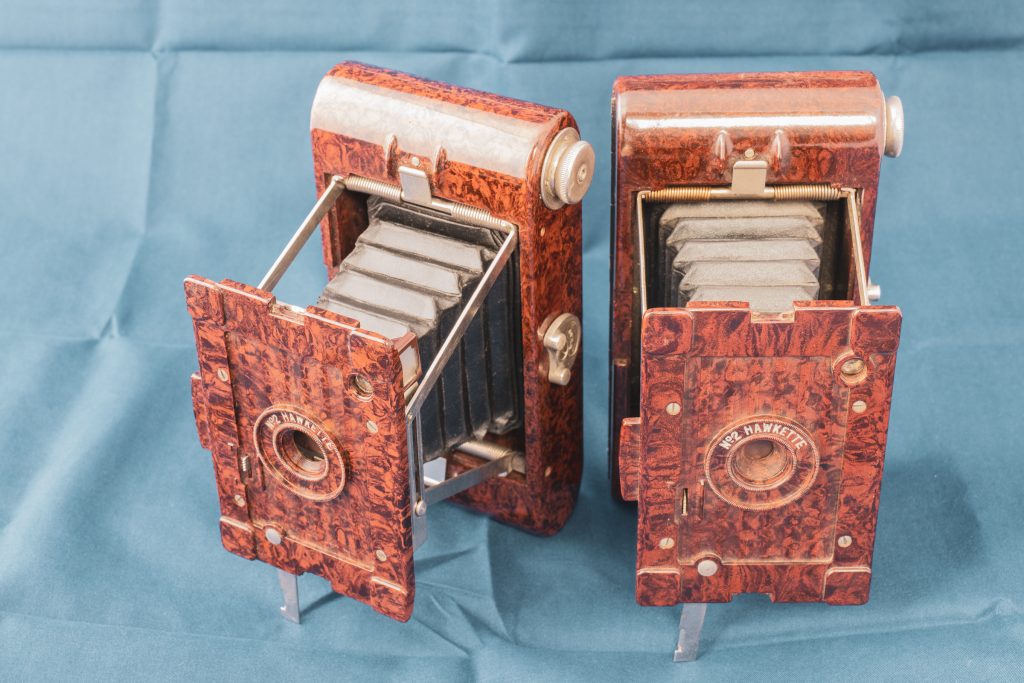
Design and handling
The No.2 Hawkette feels a more substantial and better made camera than the Rajar No.6, with my two copies weighing in at 594 grammes and 583 grammes respectively; significantly heavier than the APeM camera. It’s also more versatile, with the choice of three apertures compared to one. The film door that opens with a clever twisting disc remains attached to the camera when opening whereas the Rajar No.6 door is completely removed for changing film.
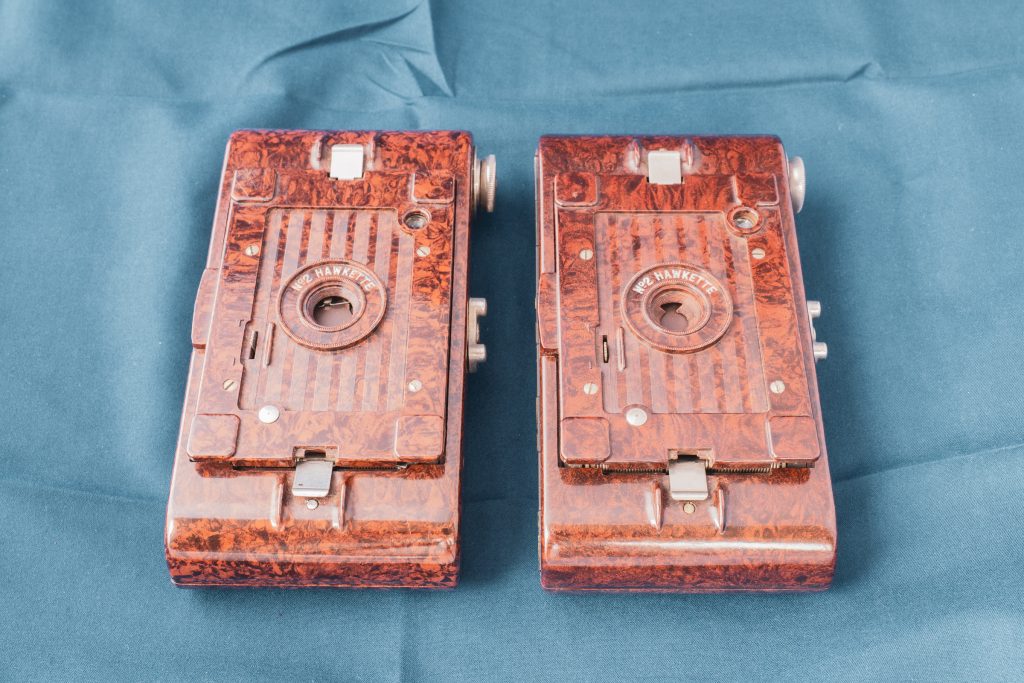
The struts lock firmly into place, projecting the bellows into the open position by tensioned springs that push the front plate of the camera forward when released by pushing in two tabs that hold it close to the body of the camera.
To close the camera, a tab and button highlighted by a read dot need to be pushed to release the struts from the locked position. Some force is required to tension the springs and close the front until the tabs click and hold it in place.
Variations
There appear to be two variations of this camera and I have endeavoured to note all of these minor differences in the table below using my two cameras as a reference. Of course, as well as these deliberate changes, you will note variations in the ‘walnut’ design between any two cameras. My later copy with the shallower lens cone is also a slightly lighter shade of brown allowing the darker flecks to be more visible.
| Feature | First version | Second version |
|---|---|---|
| Front “cone” shape | Deep with many ridges and a smaller aperture. | Shallow cone with fewer ridges and larger aperture |
| Cone condition | Cheese shaped portion cut out of the cone to allow the shutter action | Intact cone |
| Body material | Mottled brown Bakelite | Mottled brown Bakelite slightly lighter |
| Lens inscription | No.2 Hawkette | No.2 Hawkette in slightly heavier font |
| Film door | Inside has metal strip and ridge as part of the mould to help hold the film roll. Red window is flush with the exterior surface. Felt strip runs along the internal upper long edge. | Inside is flush. Red window is recessed on exterior surface. |
| Film chamber | Short tension springs | Long tension springs |
| Strut release tab | Black | Chrome |
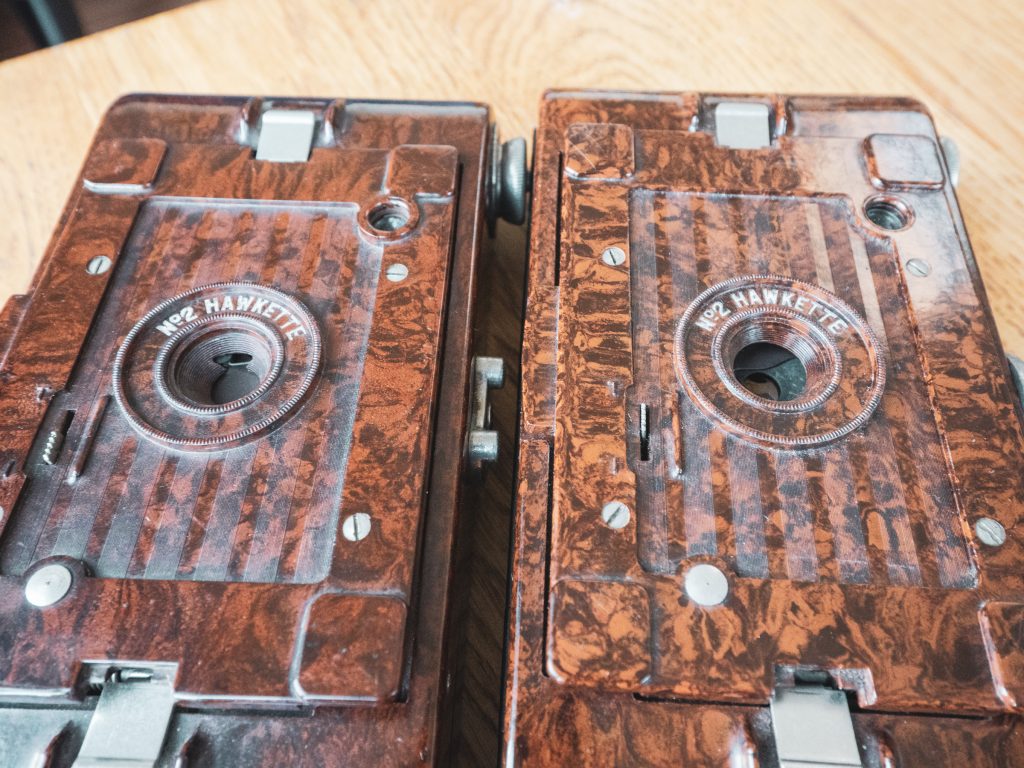
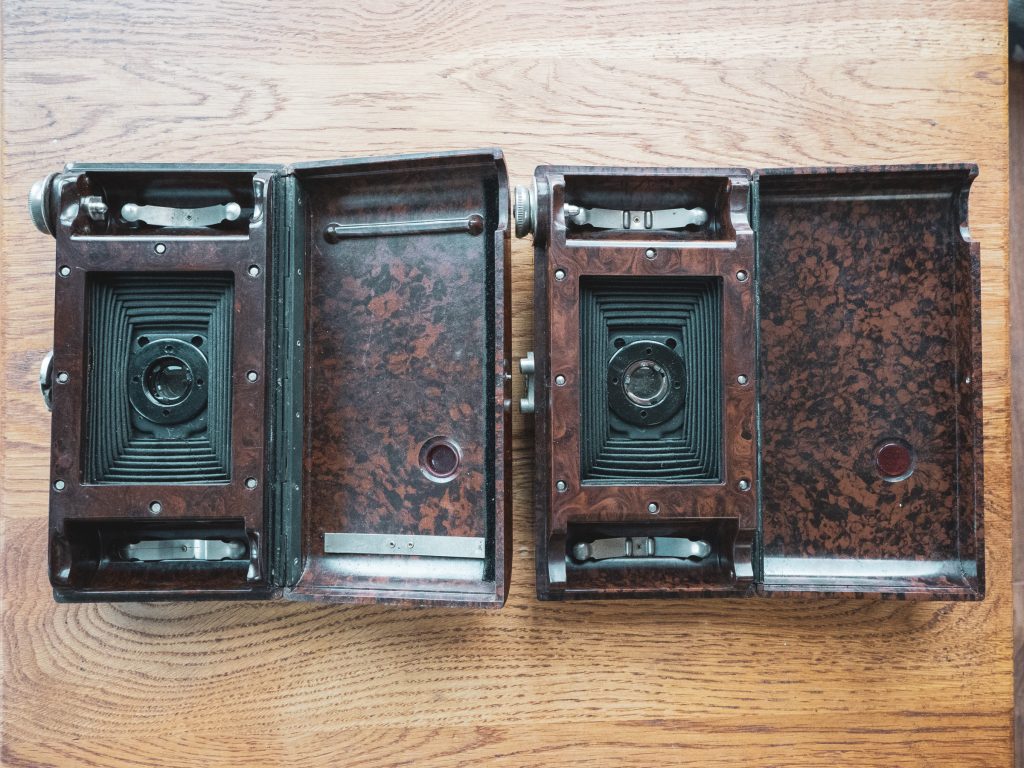
Collectable, but beware
The No.2 Hawkette is sought after by collectors for its Art Deco looks and as an early example of Bakelite use in cameras. They are relatively easy to find on eBay, but beware of condition. Cracks in the Bakelite and bellows integrity will strongly affect value and it isn’t always easy to tell with more sellers relying on rubbish Ai generated descriptions and photos that don’t show up the issues. In good condition it is an eye catching and unusual looking model.
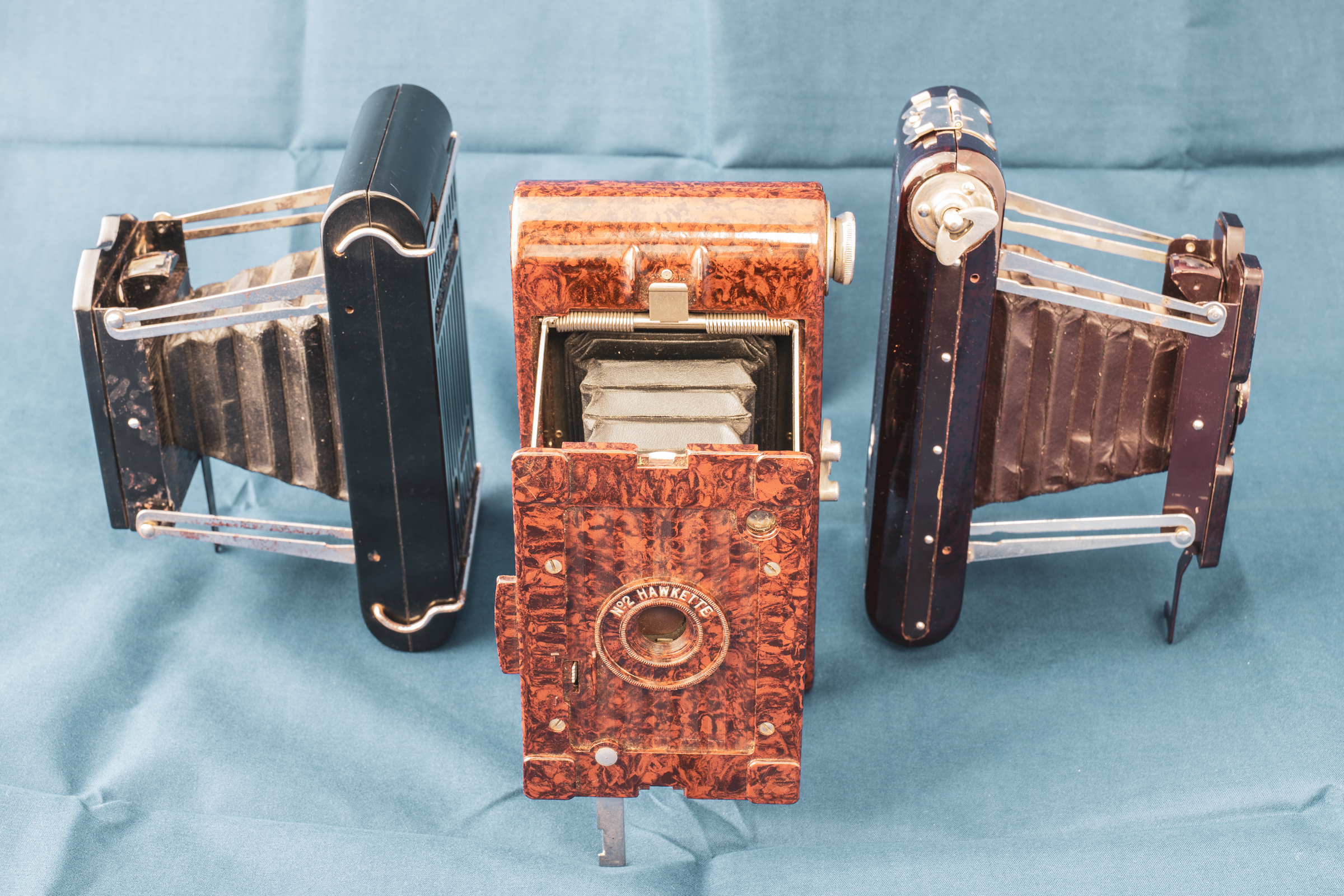
[…] Part 2: Struts, Style & Synthetics Part 2: Kodak No.2 Hawkette […]
[…] Part 2: Struts, Style & Synthetics Part 2: Kodak No.2 Hawkette […]
[…] Part 2: Struts, Style & Synthetics Part 2: Kodak No.2 Hawkette […]